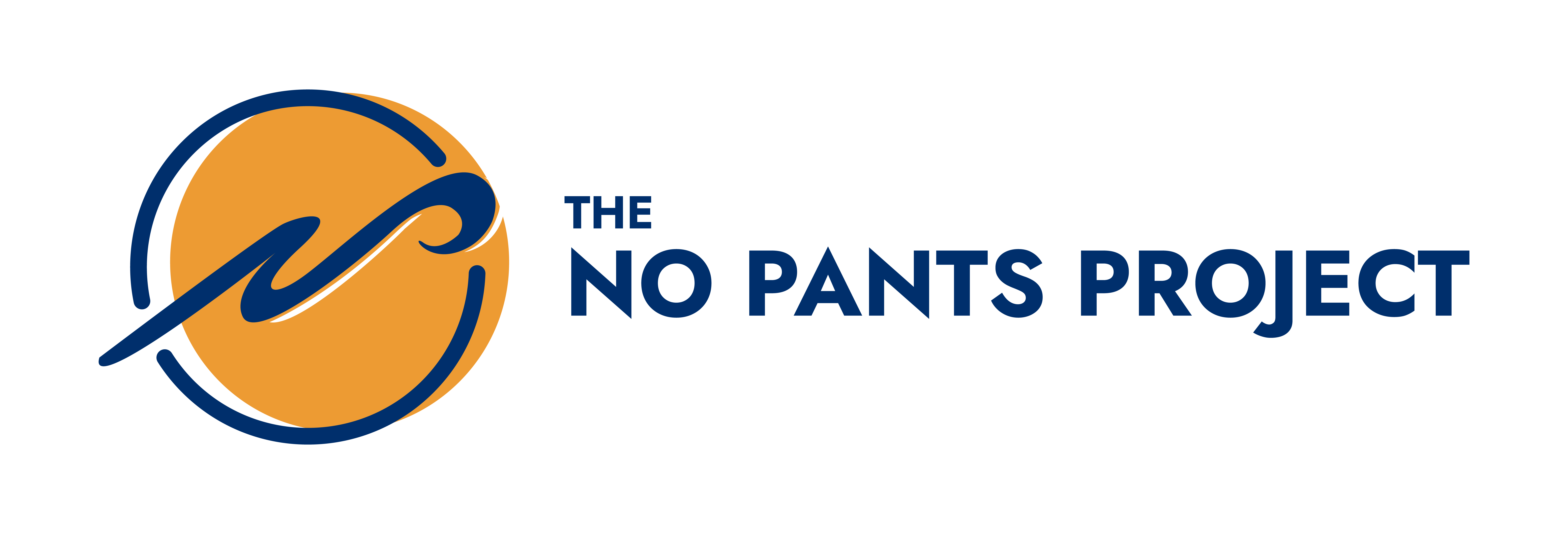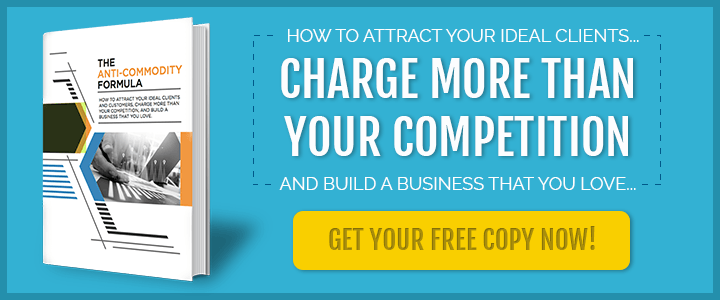The freelancing landscape is changing, and has already changed, drastically.
Competition is fierce on marketplace and gig bidding sites like Upwork, not to mention the already astronomical fees (up to 20% of your profit) and a brand new system that charges freelancers just to bid on a project.
All this means that conventional advice and answers to common freelancing questions are quickly becoming outdated and even dangerous to new and experienced freelancers alike, who can develop unrealistic or toxic expectations and beliefs about what it means to freelance.
So here are the answers you really need to make a future as a freelancer, straight from the first hand experience of veteran freelancer and The No Pants Project founder, Mike Shreeve, who has 10 years clocked in the industry and has survived and thrived through every change and upheaval during that time with relative ease.
1. How Do You Get Started As A Freelancer?
The most important part of getting started as a full-time freelancer is to have a clear goal.
You need to know exactly how many hours you want to spend freelancing.
You need to know exactly how much money you want (or need) to make in exchange for those hours in order for this to be viable for you.
And you need to know exactly what you can offer the market as a service.
[Check out a list of ideas for in-demand services you could offer here, or here.]
Why?
That’s how you determine your prices.
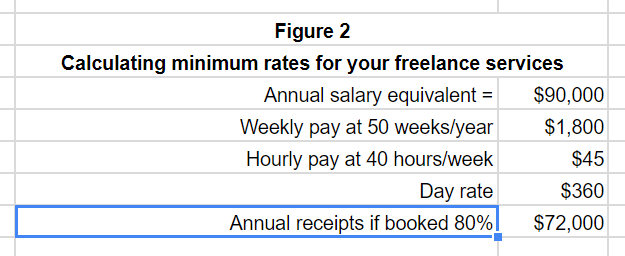
I know, it sounds crazy.
It’s completely against the ‘testing the market’ or ‘finding out what market rates are’.
But we’ve talked about why you need to approach and set your prices differently many, many times before.
Here’s an example Mike Shreeve provides in the podcast episode, ‘How To Start a Business When You’ve Got A Day Job, A Family, & Hobbies’:
Let’s say you have a goal of making $6,000/month from your freelancing before you can quit your day job. You decide you’re going to write sales emails as your service, and after researching, you settle on a price point of $75/email.
That means that to get to the $6,000/month mark, you would need to write 80 emails a month ($6,000/$75 = 80), which is about 4 emails a day Monday through Friday.
But you’ve got a day job and a family, and so even though that sounds easy, it’s actually a ton of work and stress, especially when you consider the additional work of finding and managing your clients.
“The pricing structure you have in place has created an impossible pathway to $6,000 a month. This is physically impossible – to do a day job, to do your other stuff, and to write four emails for clients.”
This is why you need to first determine how many hours you can feasibly set aside each month, leaving time for rest, your day job, your family, and your hobbies so that you don’t burn out (after all, as a freelancer you are your most important, income generating asset).
Next, set a goal for how much you need to be making from your freelancing time in order to switch over to full-time freelancer.
Then divide your goal by the hours you can work, and you’ve got your rate for whatever your service is.
For the email example it could look like this:
$2,000 / 12 hours = $167/hr or per email (feel free to round this number to $175)
That’s the rate you need to make, so when you start talking to prospects make sure you stick by it.
The next step is to just get out there and jump in the waters. Start talking to prospects, taking clients, and learning what does and doesn’t work for you in your business.
If this is where you’re stuck, check out the podcast episode ‘How To Get Started’, in which Mike says:
“Just like the fact that fear will never go away, you’re never going to fully feel like 110% this is the thing. You’ll always have some doubt, right? Otherwise you’re probably delusional. Doubt is a good thing. Doubt is a sign that you are a thinking person. But letting doubt control you to procrastinate means that you need to do some internal work.”
And that’s exactly why we recommend diving straight in and just doing it, so you can start to ease and address the doubts with tangible, direct experiences.
Once you have a few clients under your belt and you’re consistently making the rate you need to make, you’ve built the foundation you need to get started as a full-time freelancer.
The next question ties into the rest of this answer well, so let’s get right into it.
2. How Do You Get New Clients?
The best way to get clients is to set up a two-pronged approach, where you find and settle on one short-term and one long-term daily marketing strategy to build up your visibility in your niche.
Your short-term strategy is for getting clients fast, and it requires some decent time investment on your end.
Your long-term strategy eases up the amount of time you spend on client-getting, but still requires consistency and frequency.
Consistency and frequency are the key to finding and getting new clients with ease in your business using both short and long-term strategies.
Here’s the three-principle strategy for getting clients that Mike outlines in the podcast episode ‘How To Get Clients Fast’:
“These are only three things you actually need.
“Number one, you need something to offer.
“Most freelancers don’t offer anything. They just tell people what their skills are. That isn’t an offer. If I come up to you on the street and say I can juggle, did I offer you anything? An offer is that plus something else: I write words and I’d like to offer that skill to you in order to help you make more sales.
“Number two, you need someone to offer it to.
“What you need to do is take the offer that you have and find people who stand to gain the most from it. If you want to know the secret, the secret is that you reverse the two. Instead of starting with an offer, you start with a pain that you’ve noticed, and then you craft an offer using the skills you possess to solve that pain. Now you know you have an offer that’s going to benefit a certain type of person, a certain group of people.
“And number three, the most important part, is where everybody gets hung up: You need a way to get their attention so you can offer it to them.
“One, you just need to find out where they’re all hanging out. The interwebs is a great place to find where people are. And two, get their attention. There’s lots of different ways to do this, and I recommend you do the way that you can sustain because in 2019 you need quite a bit of attention-getting in order to find enough people so that eventually enough of them will say yes to what it is that you’re offering. So you can do cold outreach via email. You can do cold outreach via Linkedin, you can do Facebook ads, etc.”
Using these principles, you’re going to start with the short-term strategy so that you can pivot easily.
Maybe your messaging isn’t connecting with your prospect, the market you chose isn’t responding to your service, or you unexpectedly ended up hating the service you offer and found something different to try.
These can all happen in the early stages of your freelancing career, and that’s why you’re going to start with a short-term, fast client-getting strategy, like cold outreach.
Find a pain you can solve, create your offer along the lines of ‘I solve X pain by doing Y thing’, find out where the people with the pain you’re trying to solve are, and then put your offer in front of them to get their attention.
It is simple.
But it’s also uncomfortable – it means leaving the comfort zone and putting yourself out there.
If you can’t do that, freelancing and being a business owner might not be for you.
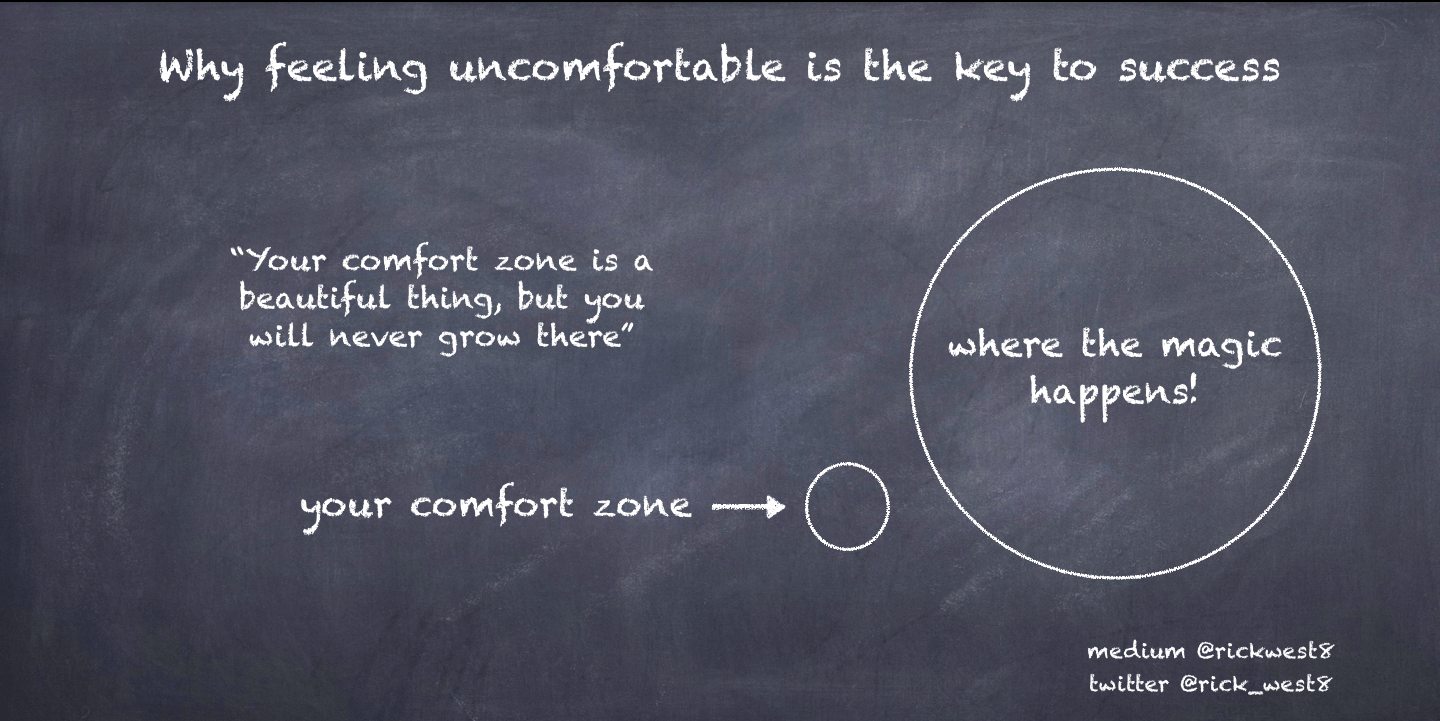
Keep this simple, and do your best to keep yourself outcome independent.
I got started as a freelancer by using this principle outline and cold emailing or cold messaging on LinkedIn, which is now the top-rated social network for lead generation.
If you’ve got more money to spare, you can also try setting up a funnel that collects email addresses, and then email your list every day with value and an offer.
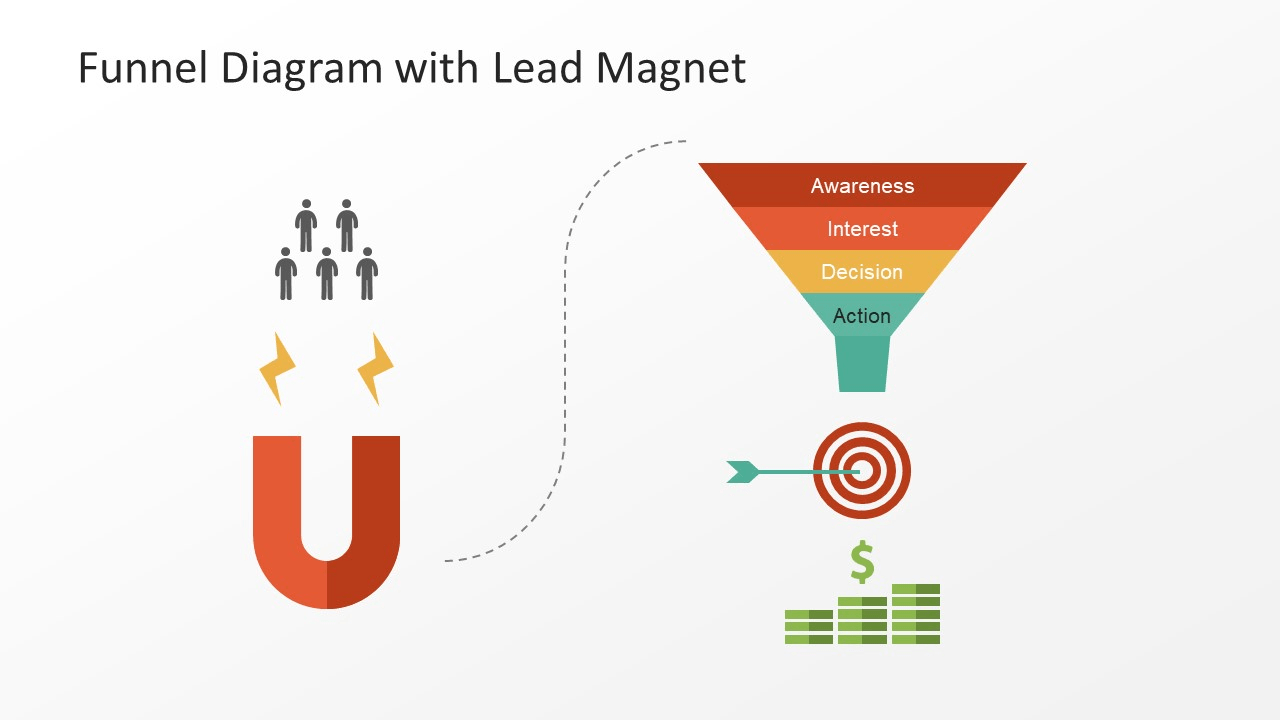
Once you’ve got some clients under your belt, have figured out what you like and don’t like, tweaked your offer, your service, or your ideal client, and settled into something that feels sustainable and enjoyable enough to do long term…
…you just switch out the mechanism you were using for getting your prospect’s attention, while leaving your offer and your market the exact same.
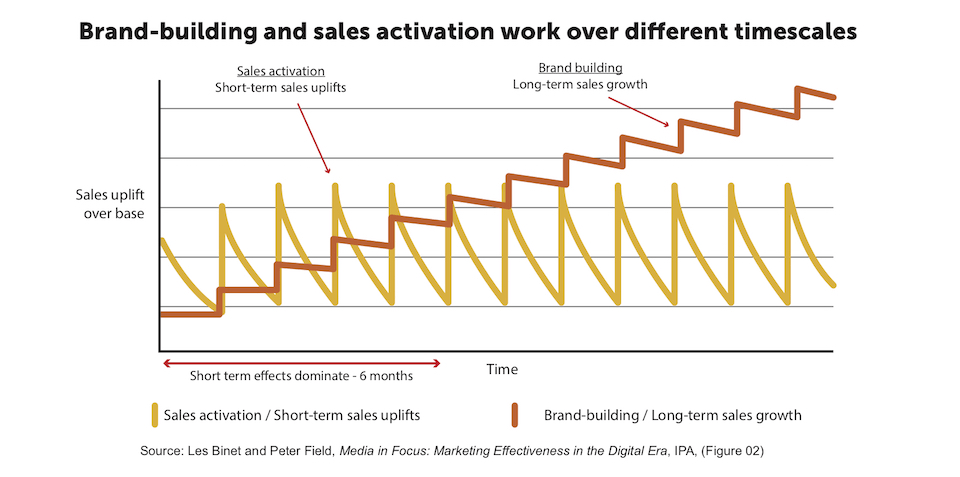
If you were spending 2 or 3 hours every single day doing cold outreach, now you can stop doing cold outreach (unless you need a client ASAP for any reason) and switch over to writing blog posts or quick social posts and sharing them on social media where people can see you all the time and experience your expertise.
Or you can do a podcast.
Or you can scale down your ad spend on your funnel and keep writing daily emails to your list that focus on building and maintaining the relationship instead of acquiring new clients left and right, so that you always have a full pipeline of people who would be happy to work with you when a spot opens up.
Remember.
For both long and short-term client getting strategies, there are just three simple, foundational principles.
- Have an offer.
- Have/find people to offer it to.
- Get their attention so you can make your offer.
It doesn’t need to be complicated, and following these principles, you can do this in whatever way works best for you and your personality/business goals.
[For more great advice and strategies on getting clients, jump through here.]
Now a final note on this…
What do you do if it feels like all the potential clients you’re talking to can’t afford me?
That is going to happen.
“You cost HOW much? Oh, I can’t afford that…”
However, if the people you’re talking to don’t have money, that doesn’t mean you have a bad offer or there’s no market or you’re awful at sales.
It means you need to work on your marketing position.
Specifically, you need to adjust your offer messaging so that you start talking to people who do have money.
In a recent podcast, ‘Why Your Prospects Never Have Any Money’, Mike Shreeve says:
“A lot of people do what I call unconscious marketing, which is when they’re out there trying to get clients, they don’t make the conscious choice of, if I say this, who is going to be most attracted to what I’m saying? Is it going to be someone with money or is it going to be somebody without money?
“Instead, they just chase vanity metrics. For example, if you write a blog post in an attempt to attract your dream client, and that blog post says something like 21 free ways to get x, y, z…
“Don’t be surprised if a bunch of people read that, see the word free, see that you offer low cost, no cost solutions to their problem, and then when they get on the call and they balk when you say, ‘Oh yeah, costs $5,500 to get started with my service.’ You were broadcasting something very different.”
So if your prospects never seem to have any money, it means you’re attracting or reaching out to the wrong segment of the market, not necessarily that there is no market for your service.
Try tweaking the content you’re putting out to see if you start getting different kinds of conversations. Instead of trying to attract the hordes of DIYers with free or low-cost options, offer content that shows your solutions are effective, proven, simple, and a great ROI.
If someone’s looking to invest in help, these are the results they want to see.
3. How Can You Avoid Working With Bad Clients?
The first part of this answer is something that comes with experience, which is recognizing red flags when you’re talking to prospects.
Be careful when talking to prospects who spend a lot of time and energy trying to haggle with you, even after they’ve agreed to a price, or devaluing your work before you even begin in an effort to cut themselves a deal.
Also be careful of prospects who don’t respect your time and demand instant responses or turn-around times.
But that’s very general, wishy-washy advice.
After all, some people thrive in fast-paced environments and don’t mind quick turnarounds or last minute needs.
So let’s do you one better.
To avoid working with bad clients altogether, you need to understand what clients are really looking for and you need to use what we call a preeminence pricing strategy.
When you do this, you protect yourself from bad clients by talking only to ideal prospects – people who respect and value the result you’re providing enough to respect your boundaries too.
So what are clients really looking for?
We touched on this briefly when we were talking about how to get clients: when you’re making an offer to prospects, it needs to be a result, not a talent/skill.
In particular, you need to understand the result that your ideal client is looking for, and then offer your prospects that result, instead of a service or skill.
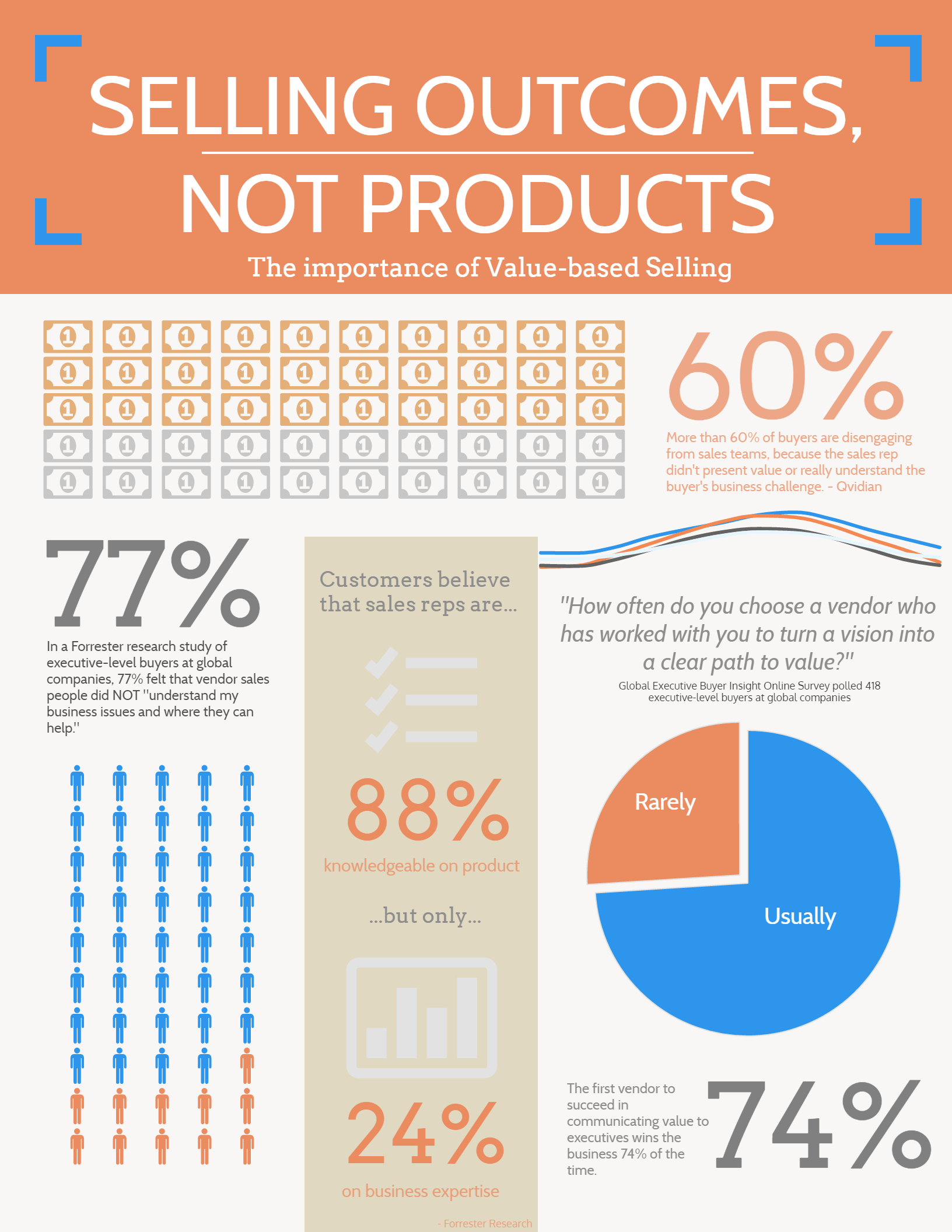
In the podcast episode ‘What Your Clients Really Want To Buy’ Mike Shreeve explains:
“Your clients aren’t buying because of your marketing. They aren’t buying because of your sales conversation.
“They are buying because of the results that you are willing and able to deliver them. Marketing and sales is just a way to communicate efficiently, succinctly, with clarity what it is that you deliver as a result.
“So if you’re looking at your business right now and you’re just like, oh my gosh, do I have to learn 90 more marketing methods?
“No, but you may need to learn more ways to deliver results.”
Once you have a solid knowledge base that allows you to deliver consistent results that your ideal client is looking for, you just need to present it to them in the language they understand.
You don’t need to go into all the details of how you deliver the result (and it makes it much easier if you don’t). Instead, offer the result first, and include a brief overview of how you do it.
For example, Mike’s ‘Millionaire Maker’ service offers the result of $1 million of passive income generated in the next year, by creating a high-ticket, packaged knowledge product.
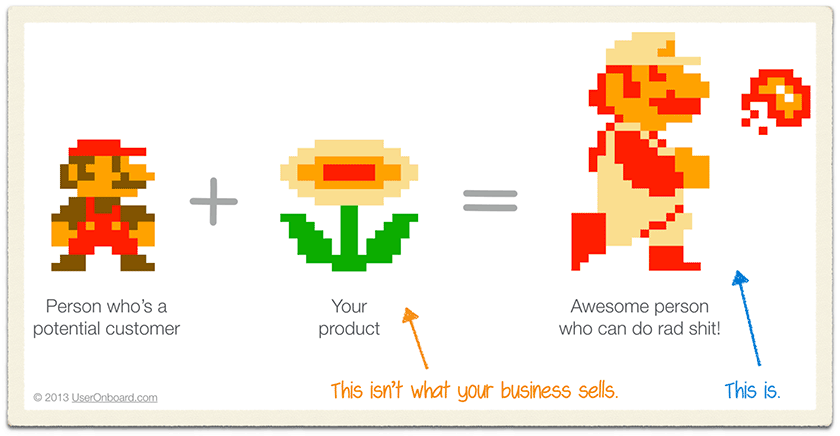
Notice how this is results first and gives very little detail to all the working parts of the service itself?
That’s how you need to be approaching clients.
Because then they can clearly understand the value of what you’re providing them, instead of trying to guess how much value your skillset might or might not add to their bottom line.
Having made this switch from service provider to results-deliverer means that your conversations with prospects will change dramatically (and this is the core of the preeminence pricing strategy I mentioned above):
“I think it would surprise many people to learn that only 20% of all sales are decided upon with price being the main factor. The other 80% is a variety of different factors which lead to the sale. Price is not the predominant reason someone buys something.
“Focus on how much you can offer because results, getting someone a result, means price is no longer the topic of conversation.”
– Mike Shreeve
Instead of haggling on price, your prospects will understand that they are making an investment in their business that will get them their desired outcomes.
Which makes you the obvious choice for them and their money, as well as reframes your role in the client’s mind from a team member (aka: “employee”) they need to manage to a business partner or expert they are working with.
That’s the kind of relationship and understanding that makes a client truly ideal.
4. Isn’t Freelancing Risky?
Yes.
But not any more risky than having a traditional job.
In fact, having a traditional job is even riskier than freelancing because it means you’re relying on one, single income stream for your livelihood.
Tomorrow you might lose your job, and everything in your life could be threatened by that.
As a freelancer doing this the right way, if you lose a client, you already know where to go and about how long it will take you to find another.
On top of that, losing one client doesn’t dry up all of your income in a single go – you still have other clients that you could ask for more work or referrals from to replace the revenue you lost.
That’s not true of traditional employment – especially if you bought into the job security myth and weren’t keeping an eye on job listings and opportunities near you.
As a traditional employee, you’re also limited in your opportunities because you usually need to stay in one city or state, and can’t just up and move out of the country either – freelancers work remotely with anyone in the world.
In the podcast episode ‘How To Prepare For The Coming Recession’, Mike suggests that one of the biggest risks you could take is not starting your freelance business now.
Why?
For one thing, freelancing is on the rise. It’s estimated that half of the workforce will be self-employed freelancers by 2027.
Which means competition is only increasing, and it will only get harder to differentiate yourself and establish the long term client relationships that are a career freelancer’s bread and butter.
But also because during a recession, having established client relationships previously will ensure that you’re able to hang on to more of your business.
Mike Shreeve says:
“If you position yourself correctly in a client’s business – if you can be the person who has consistently and frequently proven that you are there to help and to serve and you have done so in a non greedy, non abrasive, non, or at least less, transactional way – when it comes down to, ‘Let’s look at our spreadsheet and start checking off names,’ you’ve made yourself that much safer.”
So yes, there is an element of risk.
Your income could fluctuate from time to time.
But if you’re using the strategies and advice we’re giving you here, you will have built a business with a rock-solid foundation and systems in place to ensure you never go hungry – precisely because you’re a freelancer, not in spite of it.
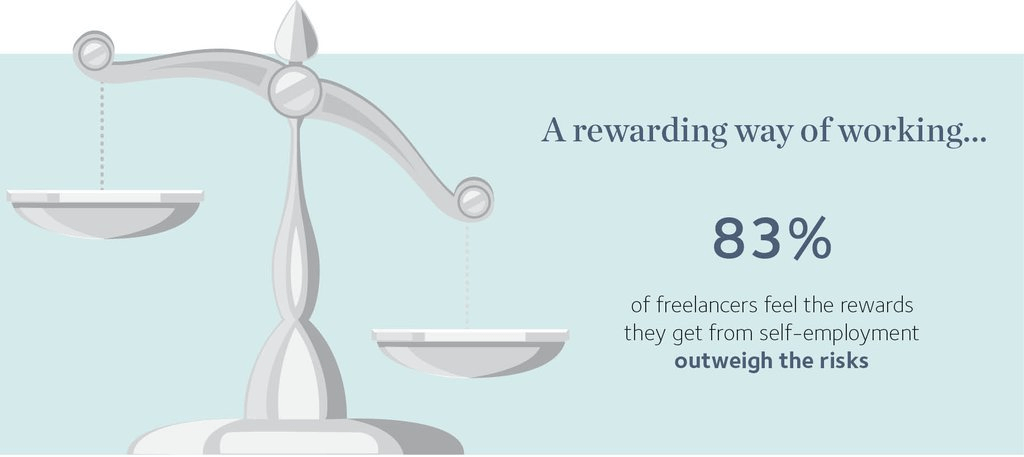
5. How Do You Stay Productive and Avoid Distractions Working From Home?
The simple answer to this is that you need to cultivate discipline.
I know that’s not sexy and it’s not a ‘silver bullet’.
In reality, the solution is not hiring one specific person or taking a course or anything else one-and-done like that.
But, there is a way to make this easier on yourself, which is what we’re going to give you here.
Specifically, you need to get more productive during the time you’re working, and more disciplined about setting and maintaining boundaries between working time and leisure time.
If you have no boundaries between the two, it will be easy to put off work in favor of another episode on Netflix, or the laundry, or, or, or…
So here’s what Mike suggests in the podcast episode, ‘2 Things You Can Do To 10X Productivity’.
Number 1: Create a daily roadmap, and force yourself to stick to it.
Your business as a freelancer, as a service provider – not as an agency where you have employees, not as an Amazon seller – your business should be simple enough that a few daily actions repeated over time will get you the general net result that you’re looking for.
And you should have scheduled in your day, consistently, time blocks which say from two to three, I will do exactly this, and so on.
You should have that scheduled, so that the simple things that you need to do become a habit. And therefore the things that were at one point difficult to do are now easy to do because they’ve become habitual.
The key is to remember that you don’t create efficiencies overnight – so you have to work through the times where this is going to feel like it isn’t working and just keep going until it’s a habit.
Make your roadmap something tangible you can stick up on your wall and track yourself against.
Eventually you will create the habits and you will train yourself to work within constraints (overcoming Parkinson’s law) so that you are highly efficient when you’re working, and don’t need to work all day to get your business taken care of.
Number 2: At the end of your work day, when you close up shop and just before you switch over into leisure mode, get clarity on what you’re going to do tomorrow.
Fill in your daily roadmap outline for yourself while you’re still fresh and have everything you were working on in mind.
For example, you should have a time block in your roadmap dedicated to your marketing efforts. If your marketing effort right now is a daily email, you could write down what you want that email to be about.
That way you’re setting yourself up for success for tomorrow, not waking up, hitting the time block, and needing to come up with something on the fly. Now when you wake up everything you need to accomplish is ready for you to accomplish it.
“Distraction is exhausting. Distraction requires you to restart in order to get going again. It takes as much as a 25 minutes to get back on track once you get distracted.
“That’s like trying to walk uphill in the snow. And every time you take a step, you sink and slide backwards. It’s very exhausting to walk up that hill.
“This is the danger of distraction. This is why I’m saying you can 10x your productivity with these two simple things because what you’ve done is you’ve entirely eliminated distraction if you work to stay disciplined to your own plan.”
6. How Do You Manage Unpredictable Income?
The ‘typical’ freelancer operates in a ‘feast or famine’ cycle, where you have good months and bad months.
When that’s the case, keeping a savings of at least three months living expenses plus three months business expenses shored up is critical to managing shortfalls of cash (if you’re full-time, of course).
Do not go full-time without savings if your freelancing business is currently operating in this up-down cycle – it will force you to take on clients and gigs that aren’t right for you and undermine the value you deliver if you’ve got bills piling up and no way to cover them.
That then leads to bad client experiences and perpetual burnout that keep you from building a business you actually love and provides the freedom you’re looking for.
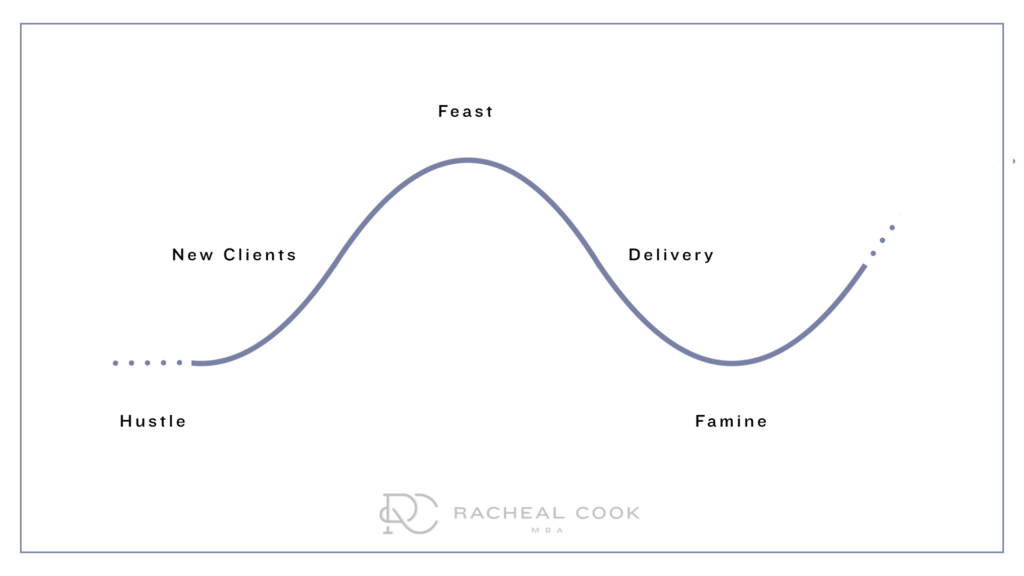
However, the real trick to managing a freelancer’s unpredictable income is to create a lead-generating, client getting system to ensure you always have new business available when you need it.
Then you don’t have to worry about huge dips in income because you have a set, proven system to replacing a client when it’s time to part ways, or generating a quick surge of cash if you’re still looking for the right, long-term client to fill a spot.
Basically, you create predictable income for yourself.
How?
By following all the advice we’ve already given you in the previous answers.
If you have a daily roadmap and time-blocked activities that you’re doing every single day, you always have a good grasp on your capacity for new clients and work.
If you spend a little time every day getting in front of new prospects with your results-based offer to solve their pain, you’ll always have new prospects and clients waiting in the pipeline.
With the preeminence pricing strategy, you won’t need to worry about whether those prospects can afford your services, and both you and your prospects will be confident in the value of your services, so closing sales becomes stress-free.
The key to all this is to ensure you’re being consistent in marketing yourself to your ideal clients.
If you struggle with that, Mike Shreeve recently did a podcast episode about ‘7 Ways To Use Your Cellphone to Market and Grow Your Business’ to ensure you have options available to squeeze in around the rest of your life and business.
If you’ve already perfected a daily content marketing medium but are running short on ideas, Mike also shares 21 different content ideas and types you can use to keep creating relevant, valuable content for your audience to keep yourself top of mind for your ideal client.
7. How Do You Keep From Working All The Time and Burning Out?
The key to this is to stop reinventing the wheel, or redesigning your business, each time you take on a new client or project.
[Related Reading: Built to Sell by John Warrillow]
If you want to make good money and not work yourself into the grave, you need to create a service that is productized.
That means that you offer the same service to each client, with just a few minor variations, so that you’re working from a template you can systemize and outsource for maximum efficiency.
The Burnout Cycle
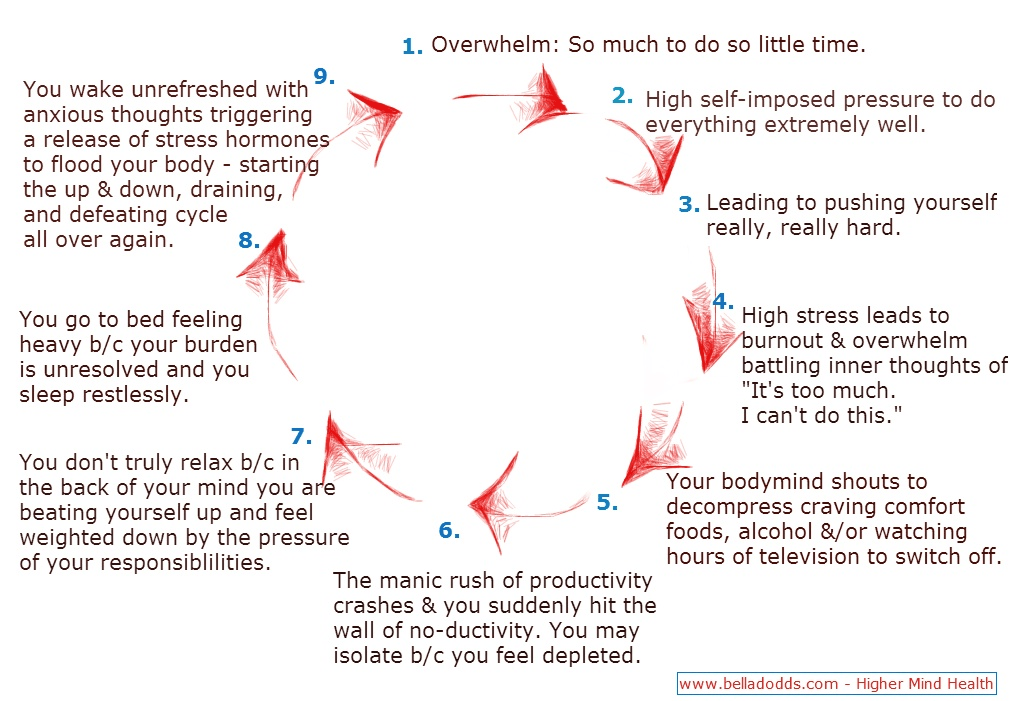
We talk about this in much more thorough detail in the recent post we did about Mike’s $12,500/month service and how you can make one just like it.
But the key takeaway is that instead of coming up with completely custom work each time you offer your services to a new client, you should be offering a result and using a proven, systemized process to deliver it.
Then get it in front of as many ideal clients and qualified prospects as possible by talking about your wins in your daily marketing interactions to get their attention, and then making the offer to them.
When you nail down a system to deliver consistent results to your ideal client, you can then outsource all but the most involved or specialized aspects of that service, so you free up your own time even more to grow your business and enjoy the freedom it gives you.
One Final Freelancing FAQ:
You might have been wondering why it didn’t come up yet, the ever-present question of:
How Do I Know When I’m Ready To Go Full-Time?
That’s because the answer to this question is really the sum of the answers to all the other questions we talked about above.
When you have all of the systems and strategies in place and worked out that we gave you in earlier answers, you’ll be ready to go full time.
Because once they are in place, you’ll be able to get new clients whenever you need them, and charge whatever you need to charge to feel secure enough to leave the traditional 9-5 behind.
So in short, you are ready to go full-time when:
- You have clear and well-defined goals for your freelancing business, including the service you want to offer, how many hours you want to work, and how much you need to charge to make the money you need to make.
- You’ve worked out what your offer is, who needs it, and where to go/how to get their attention – and you’re either reaching out to them daily or creating content to attract them daily.
- You’re offering results, not a skill, talent, or service, and you’re offering a result that solves a specific pain for a specific person, so that price is a secondary (if that) concern when you have conversations with prospects.
- You’re actively delivering the results your clients are looking for consistently and have developed solid, long-term client relationships.
- You have a simple, set daily roadmap and have cultivated enough discipline to separate your work time from your leisure time in order to ensure you’re as productive as you can be in your business and will continue to deliver great results.
- Your daily marketing efforts are producing a pipeline full of leads and prospects that you nurture daily (your marketing and nurturing efforts can be the same thing, such as an email list you email daily) and you know you can tap if you need to, so unpredictable income is no longer a major concern.
- You’ve productized your service and systematized the execution to ensure you don’t need to work long hours and flirt with burnout to deliver results. Every time you get a new client, you follow a proven system and deliver the result.
If you’re looking for more help getting these aspects of your freelancing foundation rock solid and building a freelancing career that will sustain you for a lifetime, join us inside The No Pants Project.
And if you’re curious about how successful you can really be using these strategies and advice, you can see it in action by checking out this case study to find out How to Build a $26,500 Per Month Freelance Business From Scratch.
